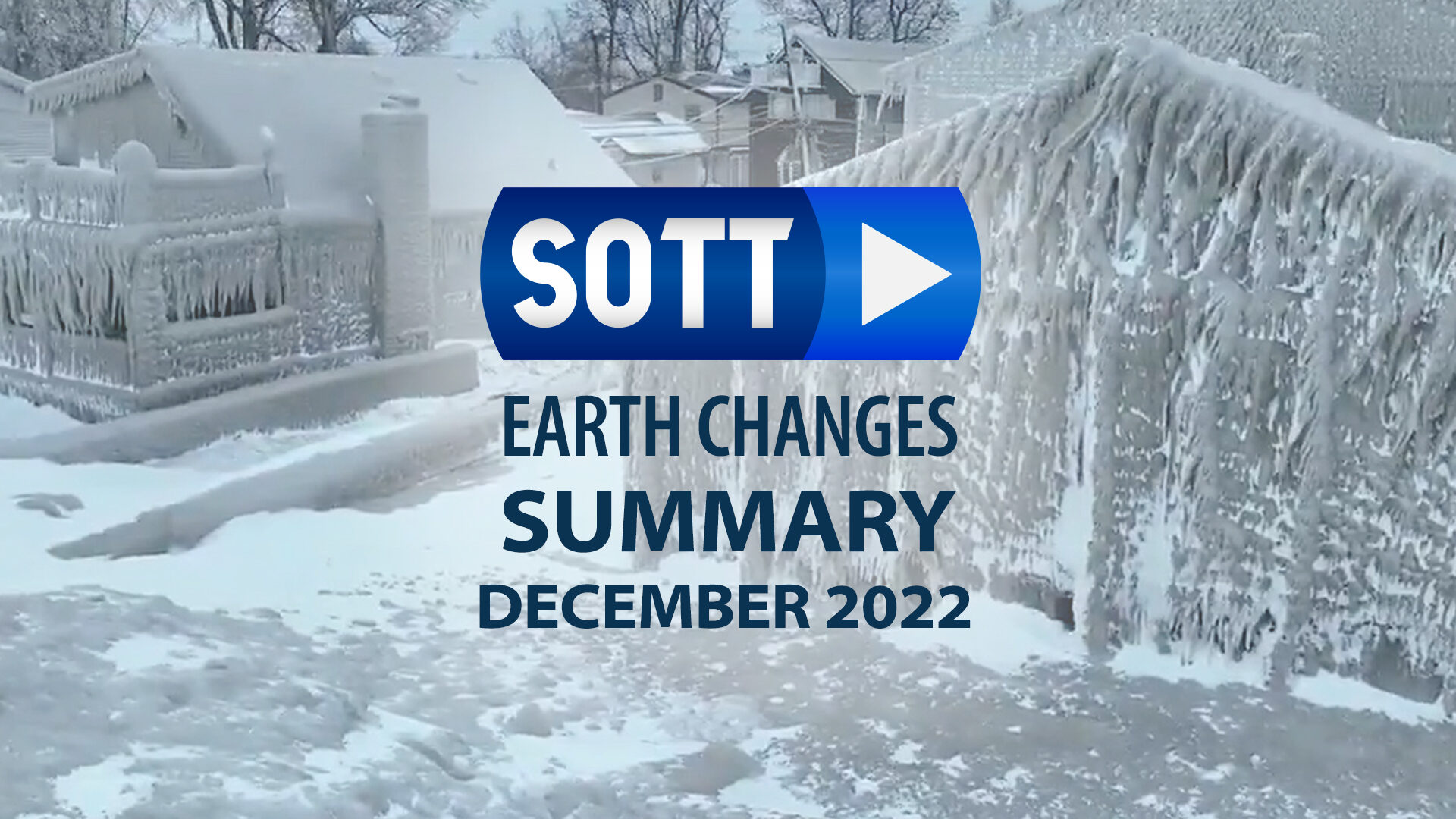Kommentar: Delvis oversat til dansk af Sott.net fra: SOTT Earth Changes Summary - December 2022: Extreme Weather, Planetary Upheaval, Meteor Fireballs
Forecasters believe that man-made climate change has empowered La Niña, triggering the so-called Greenland Block (A powerful area of high pressure in the Northeast Pacific and lower-than-normal air pressure over the western Pacific). They even propose this is the main factor for the record freezing temperatures in the northern hemisphere this winter. Yet, we know better now: The sun defines climate, and the global cold trend may increase over the coming years.
Warm-mongers also highlighted that sea ice in Antarctica reached its lowest extent on record at the end of December. Yet, in the long-term Antarctic sea ice still shows an increasing trend. In addition, the overall snow cover in the Northern Hemisphere is the second-highest in the past 17 years.
Arctic and antarctic ice and snow increase and decrease in yearly cycles connected to larger cycles of solar activity. As the solar-minimum sets in, we can expect an overall increase in ice and snow cover.
The arctic blasts engulfed the US, coast-to-coast and top-to-bottom. 60% of the US was affected by freezing temperatures, and 2 million were left without power. The pattern flipped to warmer temperatures at the end of the month, just to welcome another forecasted polar vortex in January.
Most of Canada, from British Columbia to Newfoundland, was also hit by extreme cold. Airports canceled thousands of flights, and power outages affected more than 300,000 just in Quebec and Ontario.
The UK was pummeled by the 'snowiest period in 12 years' lasting a month. The government outlined plans to go 'lights out' in January after National Grid warned there could be blackouts due to an expected energy crisis.
It was also a time of extremes in France and parts of Switzerland with significant snow at higher altitudes, and heavy rain lower down. Even if there was a warmer trend in some parts of Europe this month, the forecasts point out to a colder January.
Parts of Moscow were covered by over 12 inches of snow this month, something not usually observed until the end of winter. The last time a similar depth of snow was recorded in Moscow in mid-December was in 1989 and 1993.
And Mexico City also got its third snowfall in 82 years, affecting primarily high-altitude areas.
Floods triggered by sheets of rain continued around the world this month, including:
- Philippines - Heavy rain caused 51 deads and the displacement of at least 46,000. 17,300 acres of crops were wiped out.
- Southern Thailand - 21 inches of rain in 24 hours.
- Northcentral Vietnam - 13 inches of rain in 24 hours.
- Namibia - 3 months' worth of rain in 24 hours.
- South Africa - Countrywide floods.
- Baghdad, Iraq - Non-stop rain for 45 days.
Or watch on Odysee.
To understand what's going on, check out our book explaining how all these events are part of a natural climate shift, and why it is taking place now: Earth Changes and the Human-Cosmic Connection
Check out previous installments in this series - now translated into multiple languages - and more videos from SOTT Media here, here, or here.




Læserkommentarer
dig vores Nyhedsbrev